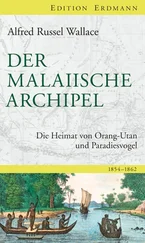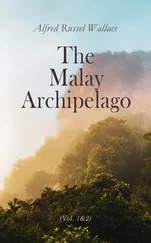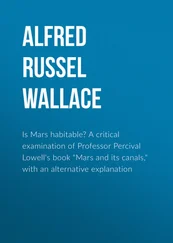Alfred Wallace - Travels on the Amazon
Здесь есть возможность читать онлайн «Alfred Wallace - Travels on the Amazon» — ознакомительный отрывок электронной книги совершенно бесплатно, а после прочтения отрывка купить полную версию. В некоторых случаях можно слушать аудио, скачать через торрент в формате fb2 и присутствует краткое содержание. Жанр: Путешествия и география, foreign_antique, foreign_prose, на английском языке. Описание произведения, (предисловие) а так же отзывы посетителей доступны на портале библиотеки ЛибКат.
- Название:Travels on the Amazon
- Автор:
- Жанр:
- Год:неизвестен
- ISBN:нет данных
- Рейтинг книги:4 / 5. Голосов: 1
-
Избранное:Добавить в избранное
- Отзывы:
-
Ваша оценка:
- 80
- 1
- 2
- 3
- 4
- 5
Travels on the Amazon: краткое содержание, описание и аннотация
Предлагаем к чтению аннотацию, описание, краткое содержание или предисловие (зависит от того, что написал сам автор книги «Travels on the Amazon»). Если вы не нашли необходимую информацию о книге — напишите в комментариях, мы постараемся отыскать её.
Travels on the Amazon — читать онлайн ознакомительный отрывок
Ниже представлен текст книги, разбитый по страницам. Система сохранения места последней прочитанной страницы, позволяет с удобством читать онлайн бесплатно книгу «Travels on the Amazon», без необходимости каждый раз заново искать на чём Вы остановились. Поставьте закладку, и сможете в любой момент перейти на страницу, на которой закончили чтение.
Интервал:
Закладка:
On reaching the mills we found it was one o'clock, the interesting objects on the road having caused us to linger for six hours on a distance of scarcely twelve miles. We were kindly welcomed by Mr. Leavens, who soon set before us substantial fare. After dinner we strolled round the premises, and saw for the first time toucans and paroquets in their native haunts. They frequent certain wild fruit-trees, and Mr. Leavens has many specimens which he has shot, and preserved in a manner seldom equalled. There are three mills—a saw-mill and two for cleaning rice. One rice-mill is driven by steam, the other two by water-power, which is obtained by damming up two or three small streams, and thus forming extensive mill-pools. The saw-mill was recently erected by Mr. Leavens, who is a practical millwright. It is of the kind commonly used in the United States, and the manner of applying the water is rather different from which we generally see in England. There is a fall of water of about ten feet, which, instead of being applied to an overshot or breast-wheel, is allowed to rush out of a longitudinal aperture at the bottom, against the narrow floats of a wheel only twenty inches in diameter, which thus revolves with great velocity, and communicates motion by means of a crank and connecting-rod directly to the saw, which of course makes a double stroke to each revolution of the wheel. The expense of a large slow-motion wheel is thus saved, as well as all the gearing necessary for producing a sufficiently rapid motion of the saws; and the whole having a smaller number of working parts, is much less liable to get out of order, and requires few repairs. The platform carrying the log is propelled on against the saw in the usual manner, but the method of carrying it back at the end of the cut is ingenious. The water is shut off from the main wheel, and let on at another shoot against a vertical wheel, on the top of the upright shaft of which is a cog-wheel working into a rack on the frame, which runs it back with great rapidity, and in the simplest manner. One saw only is used, the various thicknesses into which the trees are cut rendering more inconvenient.
We here saw the different kinds of timber used, both in the log and in boards, and were told their various uses by Mr. Leavens. Some are very hard woods resembling oak, and others lighter and less durable. What most interested us, however, were several large logs of the Masseranduba, or Milk-tree. On our way through the forest we had seen some trunks much notched by persons who had been extracting the milk. It is one of the noblest trees of the forest, rising with a straight stem to an enormous height. The timber is very hard, fine-grained, and durable, and is valuable for works which are much exposed to the weather. The fruit is eatable and very good, the size of a small apple, and full of a rich and very juicy pulp. But strangest of all is the vegetable milk, which exudes in abundance when the bark is cut: it has about the consistence of thick cream, and but for a very slight peculiar taste could scarcely be distinguished from the genuine product of the cow. Mr. Leavens ordered a man to tap some logs that had lain nearly a month in the yard. He cut several notches in the bark with an axe, and in a minute the rich sap was running out in great quantities. It was collected in a basin, diluted with water, strained, and brought up at teatime and at breakfast next morning. The peculiar flavour of the milk seemed rather to improve the quality of the tea, and gave it as good a colour as rich cream; in coffee it is equally good. Mr. Leavens informed us that he had made a custard of it, and that, though it had a curious dark colour, it was very well tasted. The milk is also used for glue, and is said to be as durable as that made use of by carpenters. As a specimen of its capabilities in this line, Mr. Leavens showed us a violin he had made, the belly-board of which, formed of two pieces, he had glued together with it applied fresh from the tree without any preparation. It had been done two years; the instrument had been in constant use, and the joint was now perfectly good and sound throughout its whole length. As the milk hardens by exposure to air, it becomes a very tough, slightly elastic substance, much resembling gutta-percha; but, not having the property of being softened by hot water, is not likely to become so extensively useful as that article.
After leaving the wood-yard, we next visited the rice-mills, and inspected the process by which the rice is freed from its husk. There are several operations to effect this. The grain first passes between two mill-stones, not cut as for grinding flour, but worked flat, and by them the outer husk is rubbed off. It is then conveyed between two boards of similar size and shape to the stones, set all over with stiff iron wires about three-eighths of an inch long, so close together that a grain of rice can just be pushed in between them. The two surfaces very nearly touch one another, so that the rice is forced through the spaces of the wires, which rub off the rest of the husk and polish the grain. A quantity, however, is broken by this operation, so it is next shaken through sifters of different degrees of fineness, which separate the dust from the broken rice. The whole rice is then fanned, to blow off the remaining dust, and finally passes between rubbers covered with sheepskin with the wool on, which clean it thoroughly, and render it fit for the market. The Pará rice is remarkably fine, being equal in quality to that of Carolina, but, owing to the carelessness with which it is cultivated, it seldom shows so good a sample. No care is taken in choosing seed or in preparing the ground; and in harvesting, a portion is cut green, because there are not hands enough to get it in quickly when it is ripe, and rice is a grain which rapidly falls out of the ear and is wasted. It is therefore seldom cultivated on a large scale, the greater portion being the produce of Indians and small landholders, who bring it to the mills to sell.
In the morning, after a refreshing shower-bath under the mill-feeder, we shouldered our guns, insect-nets, and pouches, and, accompanied by Mr. Leavens, took a walk into the forest. On our way we saw the long-toed jacanas on the river-side, Bemteví 1 1 "Bemteví" (I saw you well); the bird's note resembles this word.
flycatchers on the branches of every bare tree, and toucans flying with out-stretched bills to their morning repast. Their peculiar creaking note was often heard, with now and then the loud tapping of the great woodpeckers, and the extraordinary sounds uttered by the howling monkeys, all telling us plainly that we were in the vast forests of tropical America. We were not successful in shooting, but returned with a good appetite to our coffee and masseranduba milk, pirarucú, and eggs. The pirarucú is the dried fish which, with farinha, forms the chief subsistence of the native population, and in the interior is often the only thing to be obtained, so we thought it as well to get used to it at once. It resembles in appearance nothing eatable, looking as much like a dry cowhide grated up into fibres and pressed into cakes, as anything I can compare it with. When eaten, it is boiled or slightly roasted, pulled to pieces, and mixed with vinegar, oil, pepper, onions, and farinha, and altogether forms a very savoury mess for a person with a good appetite and a strong stomach.
After breakfast, we loaded our old Negro (who had come with us to show the way) with plants that we had collected, and a basket to hold anything interesting we might meet with on the road, and set out to walk home, promising soon to make a longer visit. We reached Nazaré with boxes full of insects, and heads full of the many interesting things we had seen, among which the milk-giving tree, supplying us with a necessary of life from so new and strange a source, held a prominent place.
Читать дальшеИнтервал:
Закладка:
Похожие книги на «Travels on the Amazon»
Представляем Вашему вниманию похожие книги на «Travels on the Amazon» списком для выбора. Мы отобрали схожую по названию и смыслу литературу в надежде предоставить читателям больше вариантов отыскать новые, интересные, ещё непрочитанные произведения.
Обсуждение, отзывы о книге «Travels on the Amazon» и просто собственные мнения читателей. Оставьте ваши комментарии, напишите, что Вы думаете о произведении, его смысле или главных героях. Укажите что конкретно понравилось, а что нет, и почему Вы так считаете.












